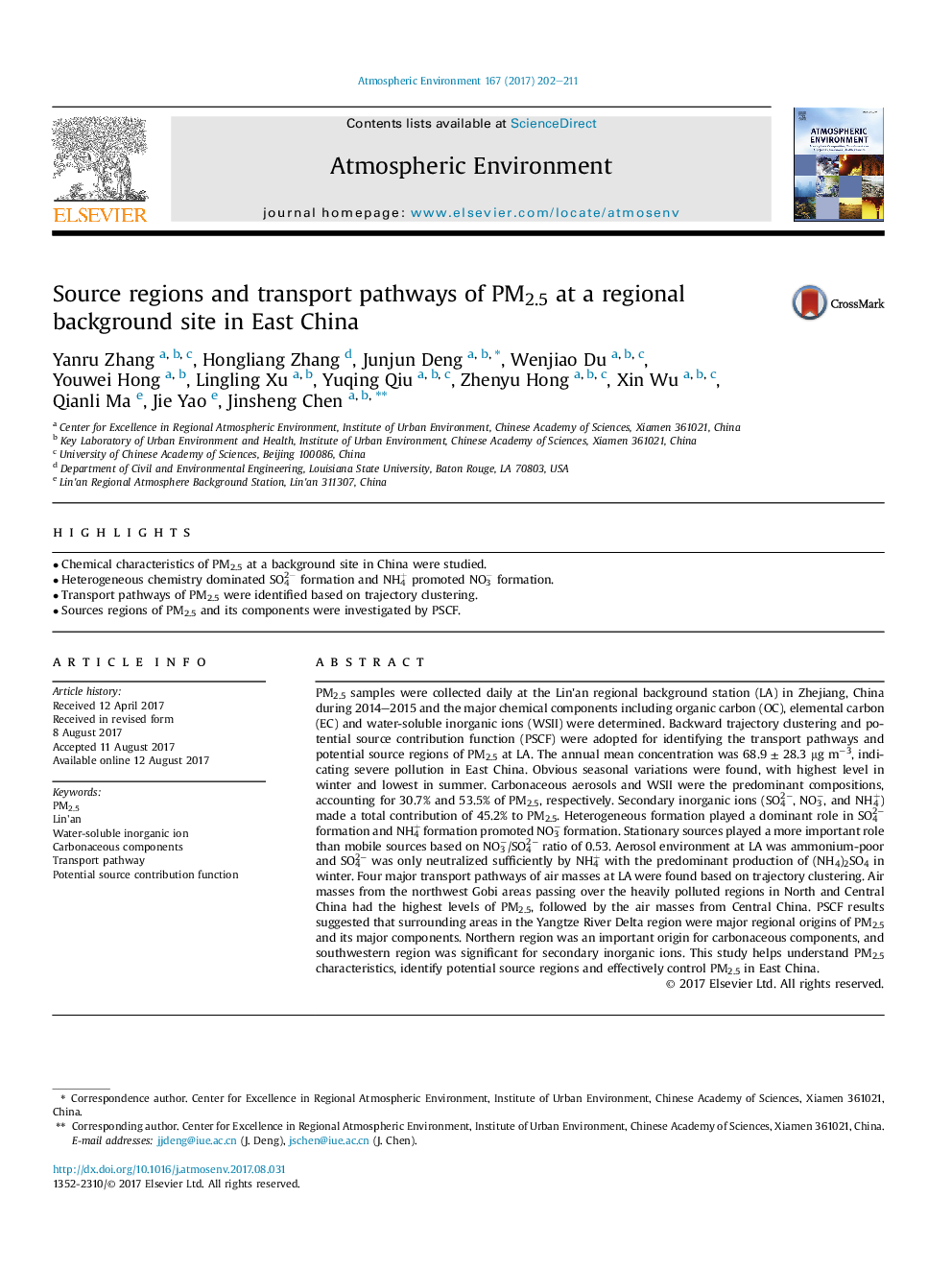| کد مقاله | کد نشریه | سال انتشار | مقاله انگلیسی | نسخه تمام متن |
|---|---|---|---|---|
| 5753064 | 1620307 | 2017 | 10 صفحه PDF | دانلود رایگان |

- Chemical characteristics of PM2.5 at a background site in China were studied.
- Heterogeneous chemistry dominated SO42â formation and NH4+ promoted NO3â formation.
- Transport pathways of PM2.5 were identified based on trajectory clustering.
- Sources regions of PM2.5 and its components were investigated by PSCF.
PM2.5 samples were collected daily at the Lin'an regional background station (LA) in Zhejiang, China during 2014-2015 and the major chemical components including organic carbon (OC), elemental carbon (EC) and water-soluble inorganic ions (WSII) were determined. Backward trajectory clustering and potential source contribution function (PSCF) were adopted for identifying the transport pathways and potential source regions of PM2.5 at LA. The annual mean concentration was 68.9 ± 28.3 μg mâ3, indicating severe pollution in East China. Obvious seasonal variations were found, with highest level in winter and lowest in summer. Carbonaceous aerosols and WSII were the predominant compositions, accounting for 30.7% and 53.5% of PM2.5, respectively. Secondary inorganic ions (SO42â, NO3â, and NH4+) made a total contribution of 45.2% to PM2.5. Heterogeneous formation played a dominant role in SO42â formation and NH4+ formation promoted NO3â formation. Stationary sources played a more important role than mobile sources based on NO3â/SO42â ratio of 0.53. Aerosol environment at LA was ammonium-poor and SO42â was only neutralized sufficiently by NH4+ with the predominant production of (NH4)2SO4 in winter. Four major transport pathways of air masses at LA were found based on trajectory clustering. Air masses from the northwest Gobi areas passing over the heavily polluted regions in North and Central China had the highest levels of PM2.5, followed by the air masses from Central China. PSCF results suggested that surrounding areas in the Yangtze River Delta region were major regional origins of PM2.5 and its major components. Northern region was an important origin for carbonaceous components, and southwestern region was significant for secondary inorganic ions. This study helps understand PM2.5 characteristics, identify potential source regions and effectively control PM2.5 in East China.
Journal: Atmospheric Environment - Volume 167, October 2017, Pages 202-211